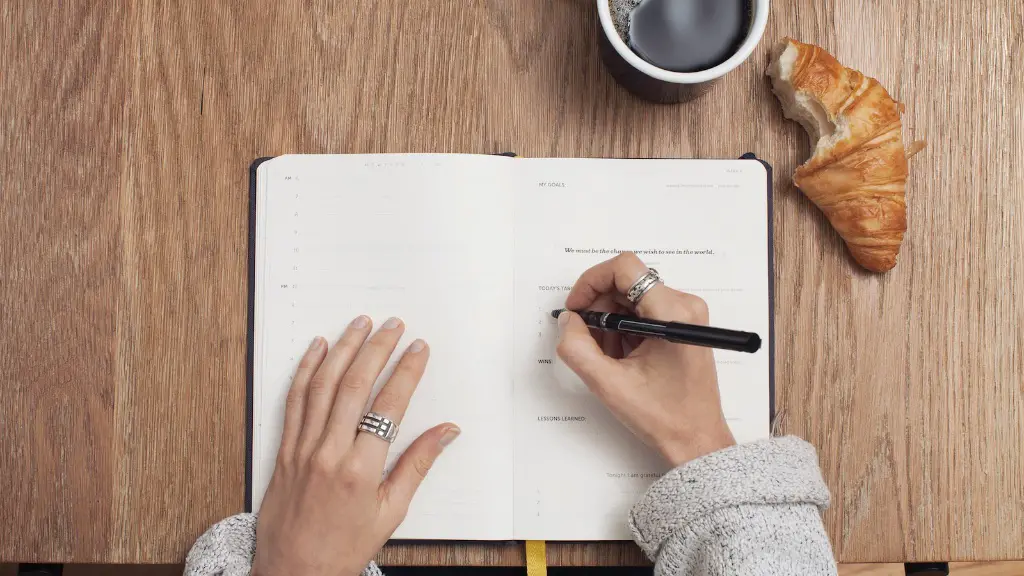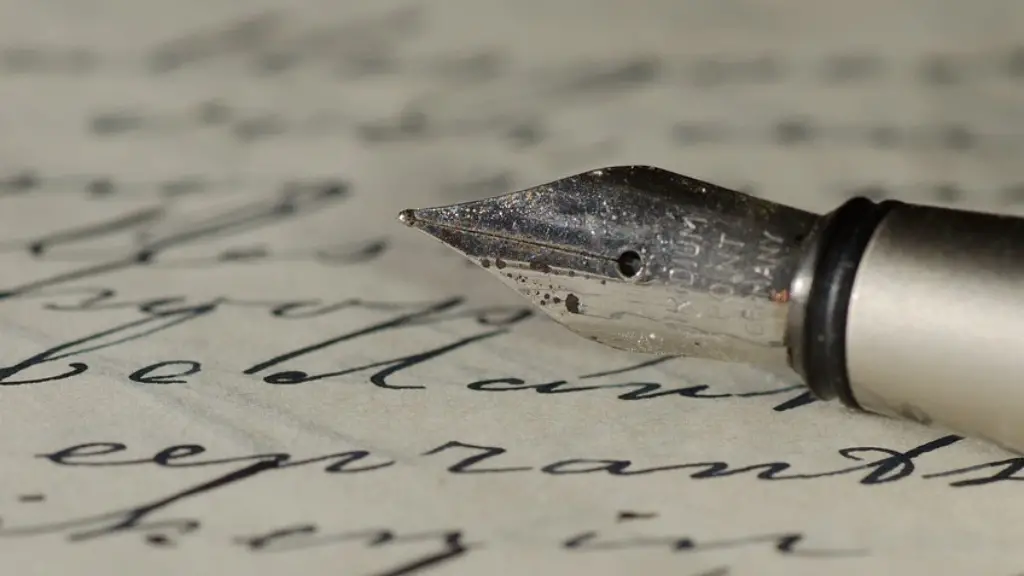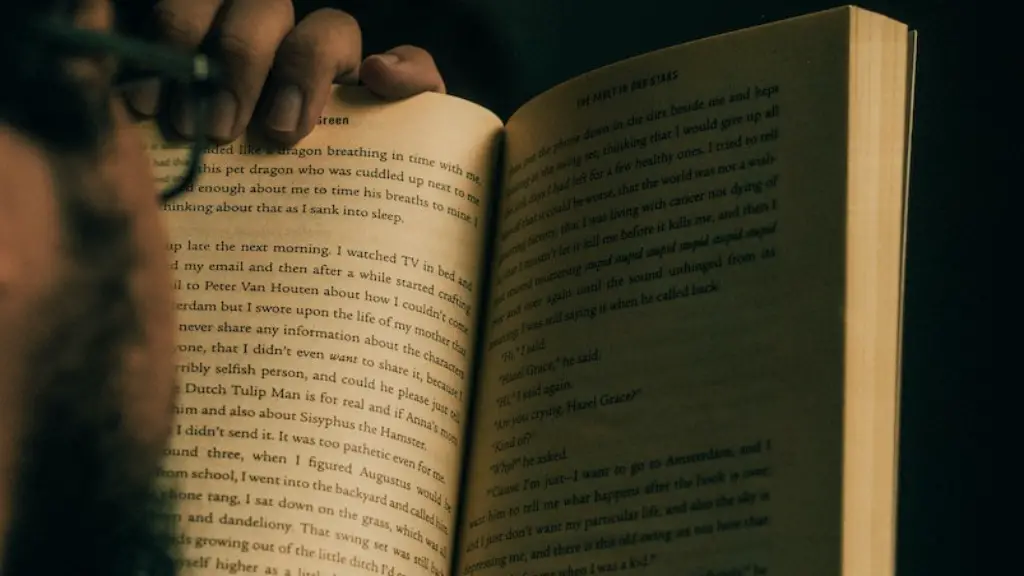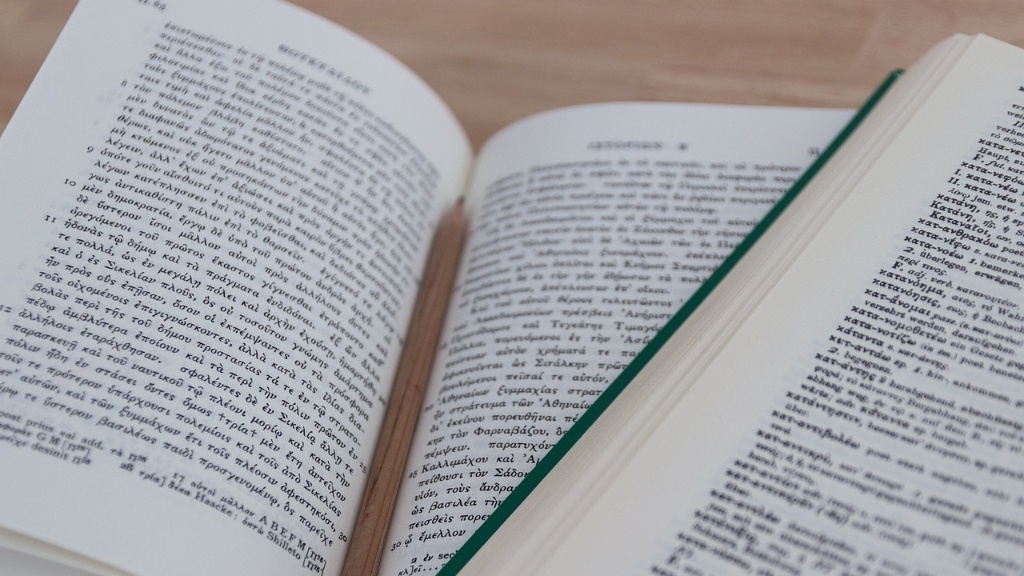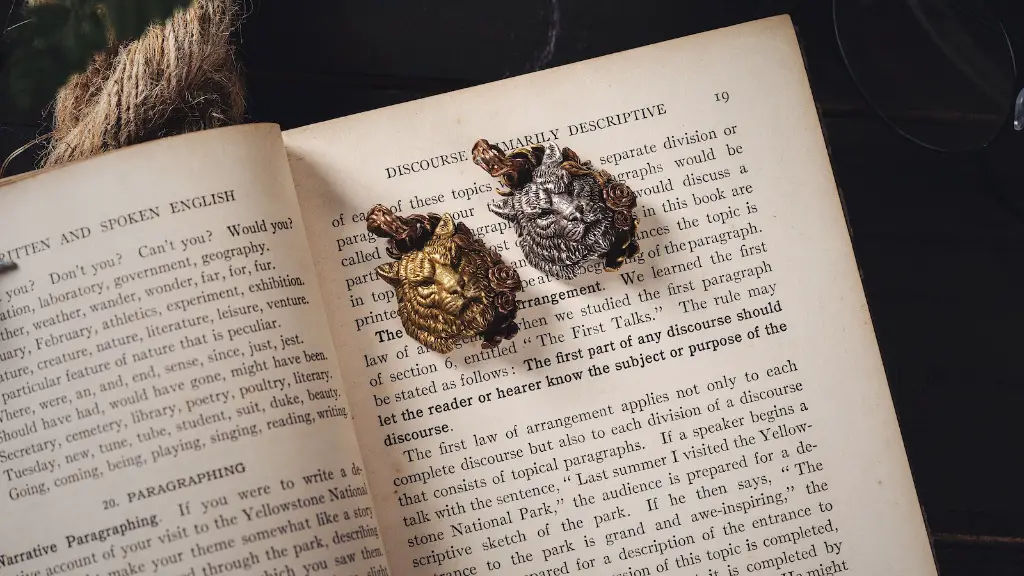Meter in poetry is the second most important poetic device after rhyme. It is the rhythm of a poem, which is dependent on the number of syllables or beats in each line and their arrangement. Meter is established when the poet chooses a particular number of syllables per line and arranges them in a pattern of repetitive beats that alliterate across the lines. Meter is identified by its stressed and unstressed syllables, and it is how the poets use them to vary their poems.
For example, the iambic pentameter—the most common meter used in English poetry—is a five-foot line consisting of two syllables per line that alternate between stressed and unstressed syllables. The rhythm of the iambic pentameter has a strong, steady beat that evokes a feeling of balance and order to the poem. Other popular meters include trochaic octameter and anapestic tetrameter. There are also irregular meters, in which the poet deviates from a regular pattern of beats in order to create a specific effect.
In order to understand the meter in a poem, it’s important to read through it carefully and note where the stressed and unstressed syllables fall. This can be done by emphasizing the loud syllables and downplaying the soft syllables when reading. It’s also important to note any irregularities or deviations from the regular pattern of beats. Once the meter in the poem has been identified, readers can better appreciate how it contributes to the overall meaning and effectiveness of the verse.
Experts agree that meter is one of the defining features of poetic structure. It helps poets to craft their verse with a sense of rhythm and flow, and it can be used to create a particular emotion or convey a certain idea. For example, rhythm can be used to create a feeling of urgency or to highlight a certain beat. Meter can also be used to create a sense of structure in a poem, as well as to highlight a certain image or idea by emphasizing certain words or syllables.
In addition, experts say that meter serves as an important factor in determining how the poem reads and sounds. A poem that follows a regular meter will have a consistent rhythm, while a poem with an irregular meter pattern may be fragmented and unpredictable. This can be used to create a particular effect and mood. Therefore, meter is an important element of poetic structure and an integral part of the poet’s craft.
The Benefits of Using Meter in Poetry
Using meter in poetry is an important tool for poets as it allows them to express themselves in different ways. The use of meter helps to create order and structure within the poem, as well as to highlight certain words and images for emphasis. Additionally, meter can be used to create a certain feeling or emotion with the poem. By accentuating certain words or phrases, the poet can evoke feelings of joy, sorrow, dedication, or any number of emotions in the reader.
Moreover, meter can help to build an architectural structure for the poem. By creating a pattern of beats, the poem can be read as a single unit, rather than as an assortment of individual words. This type of structure gives the poem cohesion and depth, adding to its emotional impact and strengthening its message.
Further, experts note that meter is often used to create a form of musicality within the poem. This musicality can add another element to the poem that can be enjoyed on multiple different levels. By using a regular pattern of beats, the poet can create a pattern of sound that can be pleasing and attractive to the reader. In this way, meter can add a unique depth and beauty to a poem.
The Challenges of Working With Meter in Poetry
While meter can be an important tool for poets, there are some challenges to working with it. One of these challenges is creating a poem that is within the meter’s pattern and yet still adds something fresh and original. This can be a difficult task for even the most experienced poet, as it requires a tremendous amount of creativity to create something that is both within the meter and yet still stands out and captures the reader’s attention.
Additionally, creating a poem with meter can be limiting in terms of forming ideas. Poetic forms that rely heavily on meter often have specific rules regarding the length of the lines, rhyme, and the number of syllables. This can make it difficult for a poet to find the right words and images that fit within the restraints of the form, while still conveying the desired message.
Finally, the use of meter can be difficult to master. For example, the iambic pentameter is perhaps the most popular meter in English poetry, yet it can be difficult to create poems that flow within this meter while still conveying the desired emotion. Additionally, it can be difficult to find the right words and syllables to fit within the patterns created by specific meters. Therefore, one of the main challenges of working with meter in poetry is the difficulty of mastering it and then applying it to create something both creative and meaningful.
Different Types of Metrics in Poetry
Metrics in poetry refer to the use of a particular type of rhythmic structure that governs the number of beats and the pattern of stressed and unstressed syllables. The most common meters used are iambic pentameter, anapestic tetrameter and trochaic octameter. Other meters include amphibrachic pentameter, dactylic tetrameter, amphimacer tetrameter, dimeter and trimeter. Each type of meter has its own unique pattern of beats and it is important to recognize and understand these patterns in order to appreciate how they contribute to the emotion and impact of the poem.
In addition to the aforementioned meters, there are also irregular meters, which add complexity to poems by deviating from the expected pattern of beats. These meters may also include a combination of regular and irregular meters, such as iambic pentameter combined with spondaic tetrameter. Irregular meters can be used to add an element of surprise or originality to a poem, as well as to create a particular mood or emotion. Therefore, the use of these meters allows poets to create a unique and interesting texture to their poems.
The use of alternate meters is also becoming increasingly popular in both traditional and contemporary poetry. This is due to the fact that alternate meters can allow a poet to adopt the traditional forms of poetry, while still allowing enough flexibility to create something unique and original. Alternate meters are also useful for creating a sense of urgency or intensity, as the variation in beats can help to emphasize certain phrases or ideas. Therefore, understanding the various types of meters available and how to use them is an essential skill for any poet.
The Purpose of Metrics in Poetry
The purpose of metrics in poetry is to create a particular rhythm and structure to the poem that can help to convey its meaning and emotion. By utilizing a regular beat, poets are able to create a sense of balance and order within their work. This can be used to create the desired atmosphere for the poem, as well as to lend emphasis to certain words and images. Additionally, the use of meter can add a unique musical quality to the poem and can make it more enjoyable to read.
In addition to this, meter is often used in poetry to create a particular tone or theme. For instance, if a poet uses a regular rhythm and meter, this can convey the idea of order and structure. On the other hand, an irregular meter can create a sense of chaos and unpredictability. Meter can also be used to create a feeling of beauty or to emphasize a particular idea. Therefore, meter is an important tool for poets and is integral to the understanding and appreciation of their work.
The Impact of Metrics in Poetry
The role of metrics in poetry is often overlooked, but it is an important element for any aspiring poet. Meter is a key tool for creating a sense of order, rhythm and flow in a poem, which can help to convey its meaning and emotion to the reader. Additionally, meter can be used to highlight certain words or images and can help to create a sense of music and beauty within the poem.
In conclusion, the use of meter in poetry is an important tool for any poet. It can be used to create a sense of balance and order within the poem, to add emphasis to certain words or images, and to create a unique musical quality. Moreover, meter can help to convey the desired tone and atmosphere for the poem, as well as to evoke an emotional reaction from the reader. Therefore, any aspiring poet should be aware of the impact of meter in poetry and how it can be used to create powerful and effective works of art.
